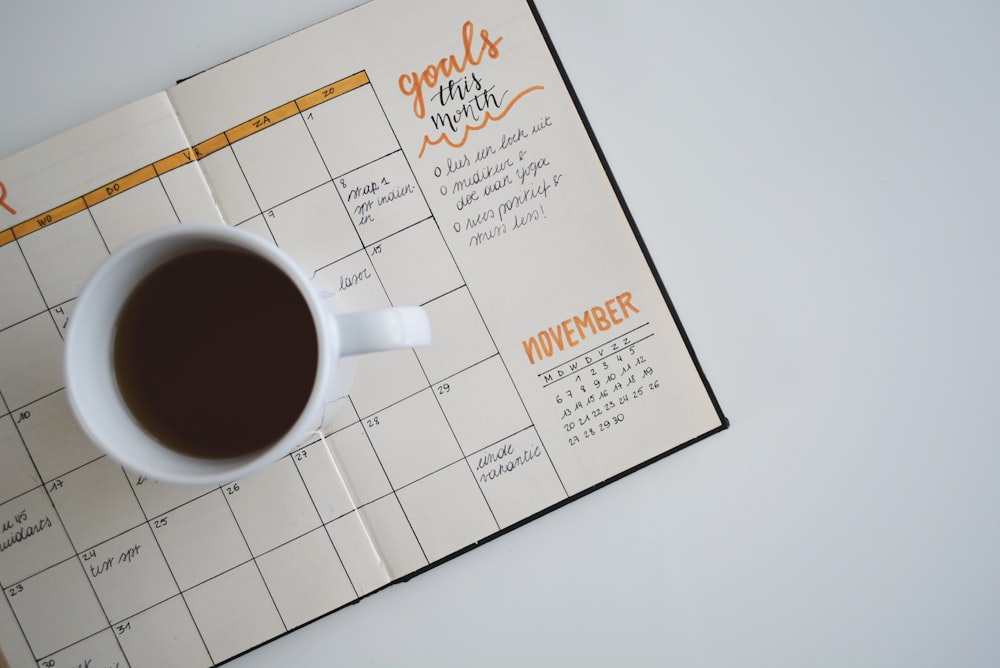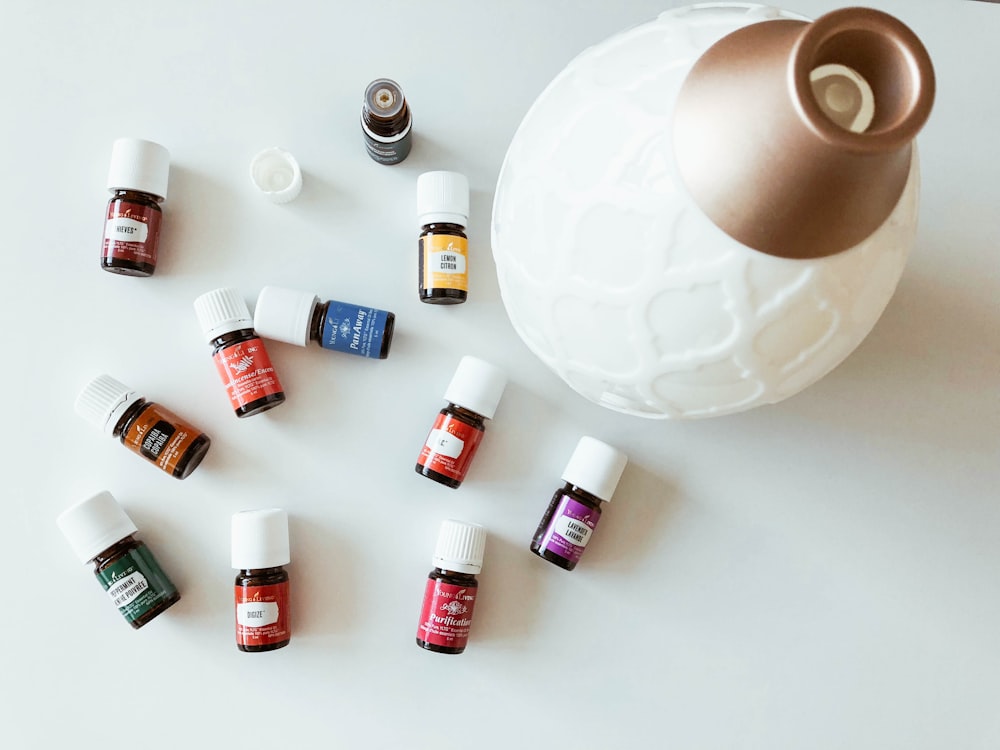With the trend of homeworking expected to continue, it’s more crucial than ever to stay productive and maintain your health. To assist you in doing this, we’ve compiled a list of 15 top recommendations for feeling well and performing well at work while working from home.

Photo by Michael Soledad on Unsplash
Create An Effective Workspace
As comforting as working from your bed or favorite spot on the sofa sounds, selecting a space specifically for work will increase your productivity. If possible, choose a separate room with a good source of natural light, which can become your dedicated home office. Using different spaces in your home, like this, can help to create a physical distinction between working and relaxing, making the boundaries between home life and work-life much clearer. If this option isn’t available to you, opt for a space in your home that is furthest from household noise and distractions. If you can’t do this at home, you may want to consider looking for a coworking space.
Set Your Desk Up Correctly And Maintain Good Posture
For employees who spend several hours each day at their desks, looking into the ergonomic factors relating to your desk set-up is a must. Making small enhancements to workstations can have a wealth of benefits, from reducing the likelihood of lower back pain and tension headaches to increasing energy levels and boosting confidence. Try to follow these steps from the NHS for setting up your desk to improve comfort, posture, and productivity whilst working from home.
Try To Limit Distractions At Home
While there are many benefits to working from home, it can introduce several new distractions to contend with. It might become tempting to start household chores during work time or to turn on the TV whilst at home. To overcome these potential distractions, try to allocate a certain time for completing housework and ensure that your workspace is clean and tidy, ahead of the working day. Instead of turning on the TV, try listening to music instead. Research from Harvard Medical School explains how listening to certain types of music at different times can boost your mood, reduce stress levels, and enhance cognitive performance. Not only will you overcome a distraction, but you will discover a solution that boosts productivity instead!
Incorporate Decompressing Into Your Routine
For a lot of people, getting off of work is just the start of their day; they still have a lot of things they’ll need to do, such as chores at home, running errands, picking up the kids, and maybe even going to a second job. It all depends. But regardless of what choice you make, you’re going to have to keep in mind that you’ll need to decompress and find ways to just let go and relax for a bit. It doesn’t have to be long, either. Ideally, something like fifteen to twenty minutes can massively help! For example, during this time, you just do things that are good for your health, such as playing a game of Mahjong on your phone, doing some breathing exercises, practicing meditation, or even consuming positive content But overall, you just need to keep these in mind.
Don’t Be Consumed By Social Media
As more time is spent on devices, one of the most popular sources of distraction comes from an increase in social media use, which can become addictive without the usual boundaries that limit access in an office environment. If you’re losing too much time to social media, our team suggests logging out of your accounts during working hours or turning off notifications, especially on mobile devices. In addition, removing social media links from your desktop browser can help to reduce temptation and encourage you to make a more conscious decision about when you would like to browse and publish updates there.
Set Healthy Boundaries With Your Household
It’s easy for family members, friends, and flatmates to forget that while you’re at home, you’re also working. To maintain healthy relationships and minimize disruption, have a conversation with your household in advance so that they are aware of your working hours and appreciate the type of environment that will support your arrangement. If it isn’t possible to follow your usual pattern, depending on individual circumstances, modifying your working hours and responsibilities might be an option. Discuss this with your line manager in the first instance and communicate any changes to your colleagues and professional network, where required. If your hours do change, we would also recommend updating your diary to manage expectations and help you maintain the boundaries between your work life and home life.
Introduce A Homeworking Routine
Whilst there is no pressure to ‘get ready’ when you’re working from home (unless you have video calls scheduled), it’s a good idea to change out of your pajamas and maintain usual levels of grooming and hygiene. In the same way that setting aside a space for work helps to establish boundaries, getting ready in the morning will help you to adopt a professional mindset while signaling that your working day is due to begin.
Create A Schedule That Suits You
Having a schedule helps you to manage their workload, complete allocated tasks on time, and recognize when they can take on more work. While there are many templates available to help you plan your day, and we would always advise using one, have you ever considered how to optimize a schedule for you? Informed by genes, age, and environment, each person has their biological rhythm (chronotype), which determines when they feel most awake, ready to get up in the morning, and fall asleep at night. An article in Business Insider outlines the best sleeping times and work schedules for Dr. Michael J. Breus’ four chronotypes: dolphins, lions, bears, and wolves. Identify your chronotype and combine this with the flexibility homeworking offers, to create an effective schedule, tailored to the needs of your internal clock.
Develop A Short Routine To End The Working Day
Without the journey home to mark the end of a working day, it can become more difficult to switch off afterward and get the rest that’s needed to stay productive and maintain high standards of well-being. To combat this threat, we recommend introducing a short routine at the end of your working day, to replace the usual endpoint that traveling home provides. As the end of the day approaches, review and update your to-do list, check tomorrow’s schedule, and try to finish on a positive note, so you feel more relaxed and prepared for the next day. Before switching off, say goodbye to your colleagues, so they know that you’re leaving, and tidy your workspace, ensuring that all equipment is packed away. This last suggestion is particularly important if you don’t have a dedicated room to work in, as it will help your house to become a home again.
How Often Should Break And For How Long?
Without the refreshment breaks, conversation, and in-person meetings that naturally break up the working day, employees may need to learn when to schedule breaks, so that they can stay productive and feel well. A long-established time management method, that improves focus and productivity, is the Pomodoro Technique. This method advocates breaking your day into 25-minute intervals, which are followed by five-minute breaks, known collectively as Pomodoros. After completing four Pomodoros, take a longer break of 15-30 minutes, and repeat this process throughout the day. By giving a task your full focus for a manageable amount of time, it allows you to concentrate on completing it and rewarding yourself with a break afterward, to stay refreshed. Use this technique to stay productive, schedule adequate breaks, and feel a greater sense of achievement at the end of the working day.
How Can Breaks Boost Your Productivity?
When a break begins, one of the most beneficial actions you can take is simply moving away from your desk. Remaining in the same workspace all day can become tedious while stepping away during break times allows you to take stock and return with a fresh perspective. Making a healthy lunch or drink, reading your favorite book, or catching up with a friend are all great options for making the most of your time out. However, with more time spent at desks, carrying out physical activity is fast becoming a crucial part of the working day. Activities like stretching can reduce aches and pains while attending a virtual fitness class or going outdoors for a jog or brisk walk can raise energy levels while reducing feelings of stress and loneliness. To get you started, BUPA has a selection of desk stretches for homeworkers, while the Guardian has reviewed the best virtual fitness sessions on offer.
Virtual Conferences, Online Training And Nsocializeetworking
A more opportunistic aspect of the shift towards homeworking is that many meetings, conferences, and training courses have moved online, which improves accessibility for all. Whether it’s the cost and inconvenience of travel, or funding for accommodation and admission that have stood in your way previously, many of these barriers to participation have now been lowered or removed altogether, so there’s no better time to learn more about your sector, grow your network and upskill. Browse your professional body’s website to discover the range of qualifications, accreditations, and networking forums that could work for you. Meanwhile, sector-specific publications and their social media channels can be an excellent outlet for discovering more informal learning opportunities and virtual conferences, to boost your career.
How To Socialise With Your Colleagues Remotely
Working remotely doesn’t mean that the social aspect of spending time with your colleagues must come to an end. There are many ways to stay social while working remotely, from virtual water cooler conversations and team lunches to quizzes and office parties on Zoom! If you’re searching for an activity to improve health and fitness levels, then setting up a sofa-to-5k running challenge for your team could boost morale, help you all stay connected, and provide a social opportunity as you discuss progress. If you’re looking for an activity with more meaning, then a charitable endeavor could be a great option. Organizing a virtual coffee morning will provide an opportunity for colleagues to catch up and socialize while generating funds for a deserving charity.
These 12 tips should help you to stay productive as well as look at your well-being. Do you have any others that should be included? Please add your thoughts in the comments below.























